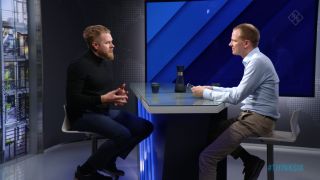AI-powered 6G receiver – Hardware-in-the-loop testing of an AI receiver integrating DPoD




Join Andreas Oeldemann from Rohde & Schwarz and Dani Korpi from Nokia Bell Labs as they discuss the role of AI receivers in addressing the challenges of 6G. The companies partnered to develop a testbed for evaluating the performance of Nokia Bell Labs’ HybridDeepRx in the lab.
Besides 5G frequency bands, future 6G communications will also use higher frequencies to cover new use cases. Higher frequencies entail higher path loss. Maintaining an efficient network may require advanced receivers at base stations to overcome linear and particularly non-linear distortions. Such receivers must not only be able to compensate channel impairments and device impairments such as CFO, but must also address non-linear device impairments such as generated by a mobile device’s power amplifier. Nokia Bell Labs integrated digital post-distortion (DPoD) into their advanced AI receiver to compensate for such non-linear impairments. Their HybridDeepRx is an example of what this looks like in practice, leading to substantial improvements in 6G uplink coverage.